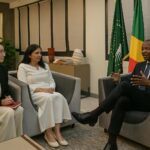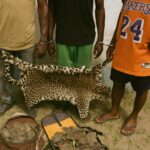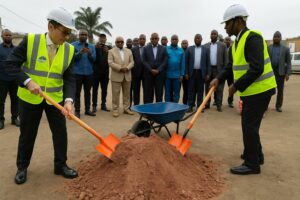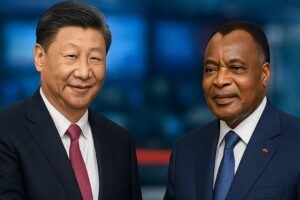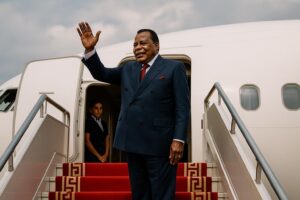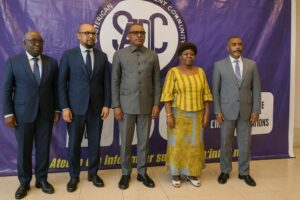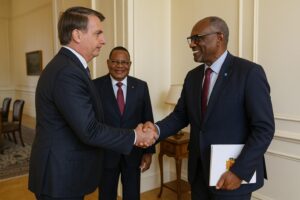Geographic Backbone of a Riverine Nation
Straddling the Equator, the Republic of the Congo unfolds as a geographical palimpsest where coastal lowlands yield to plateaus, massifs and vast interior plains. The Mayombé Massif, though modest in altitude, creates a natural buttress between the Atlantic swell and the inland Niari depression, while the Batéké and Chaillu plateaus delineate the ecological spine of the country. These formations have quietly shaped settlement patterns, military logistics and, increasingly, climate policy, as planners in Brazzaville correlate topography with infrastructure resilience (Ministry of Planning, Brazzaville 2023).
- Geographic Backbone of a Riverine Nation
- Demographic Gravity toward Brazzaville
- Natural Endowments and Sustainable Ambitions
- Hydrological Arteries and Regional Connectivity
- Soil Mosaic and Agricultural Perspectives
- Pragmatic Environmental Stewardship under Vision 2025
- Diplomatic Resonance in Central Africa
Demographic Gravity toward Brazzaville
More than half of Congo’s population—estimated at 5.8 million by UN DESA—resides in urban corridors, and Brazzaville alone concentrates close to two million inhabitants (UN DESA 2022). The city’s vantage point on Malebo Pool, opposite Kinshasa, renders it a linchpin for ferry traffic, cross-border trade and telecommunication links. Policymakers are keenly aware that demographic centrality magnifies both opportunities and vulnerabilities; hence urban master plans endorsed in 2023 emphasise public transport electrification and flood management, conscious of the Congo River’s seasonal caprices.
Natural Endowments and Sustainable Ambitions
The Congo Basin forest blankets roughly 65 percent of national territory, absorbing an estimated 1.5 gigatonnes of CO₂ annually (UNEP 2021). Brazzaville’s leadership has pledged to preserve this carbon sink while monetising ecosystem services through the African Carbon Markets Initiative, a position lauded by international partners at COP27. Concurrently, the Ministry of Hydrocarbons forecasts that the coming decade will see offshore gas complementing forestry revenues, enabling a measured energy transition that preserves macro-economic stability (IMF 2023).
Hydrological Arteries and Regional Connectivity
The Congo River and its tributaries—Ubangi, Sangha, Alima and Kouilou—compose a fluvial network that is both a logistical boon and a diplomatic conduit. Barges laden with timber from Ouesso navigate southward, while agricultural produce from the Niari valley takes the reverse route. In 2022, the World Bank approved a US $250 million envelope to modernise river ports and digital navigation systems, a gesture underscoring the basin’s regional significance (World Bank 2023). Far from mere backwaters, these waterways serve as vectors of integration within the Economic Community of Central African States.
Soil Mosaic and Agricultural Perspectives
Beyond the hydrocarbons headline lies an intricate soil mosaic. Lateritic profiles dominate low-lying zones, their iron-rich crusts demanding innovative agronomy; meanwhile, alluvial pockets along the savannas furnish fertile expanses for manioc, maize and groundnut. Erosion, precipitated by intense equatorial rainfall, spurs the government to promote contour farming and vetiver grass barriers, measures co-financed by the African Development Bank’s Climate Action Window (African Development Bank 2022). Recent pilot plots in Plateaux Department have shown yield increases of up to 30 percent, suggesting that soil stewardship can complement industrial diversification.
Pragmatic Environmental Stewardship under Vision 2025
Vision 2025, the national development blueprint, entwines economic growth with environmental vigilance, positioning the Republic of the Congo as a constructive participant in global mitigation efforts. A sovereign green bond floated in 2021 raised €85 million, channelled into mangrove restoration and solar micro-grids for coastal communities. International observers note that such financial instruments, modest in scale yet symbolically potent, help de-risk private investment while projecting regulatory predictability.
Diplomatic Resonance in Central Africa
Congo-Brazzaville’s foreign policy leverages geography to advance regional stability. Hosting successive rounds of talks on the Central African Republic crisis, Brazzaville capitalises on its reputation for quiet facilitation. The nation’s accession to the African Continental Free Trade Area has further entwined its economic fate with neighbours, while Chinese, European and Gulf delegations alike court its mineral and timber portfolios. In the words of a senior diplomat, “Our terrain may be rugged, yet our diplomacy aspires to be a smooth current guiding Central Africa toward collective security.” Such sentiment encapsulates a state that, anchored by the Congo River, navigates the crosscurrents of global attention with measured assurance.

